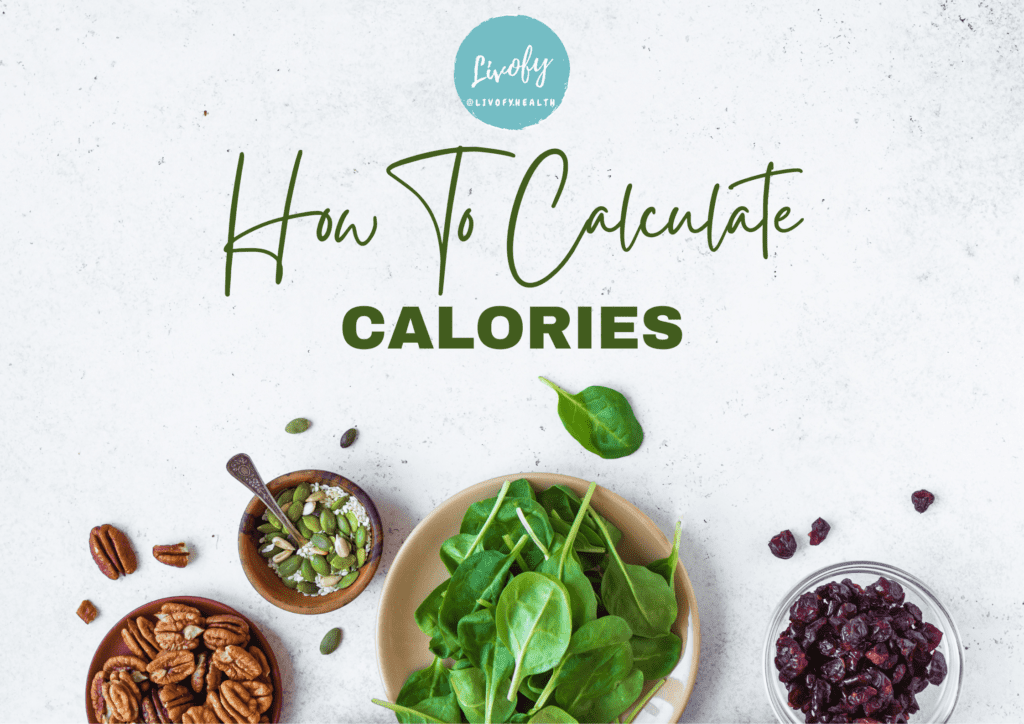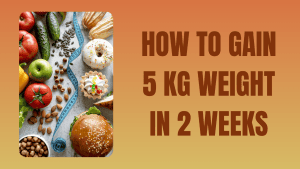Reducing your daily calorie intake can be a successful weight loss strategy. It can be challenging to know how to calculate calories to lose weight. The same relies on a number of variables, including your age, sex, size, and level of exercise.
The calculator may estimate your calorie requirements and is based on the Mifflin-St Jeor equation. It makes use of demographic data as well as other aspects that affect your calorie requirements, such as genetics, medications, and lean body mass. If you’re looking for some information on how to calculate calories to lose weight, you’re just at the right place!
What are Calories?
A calorie is simply a unit used to measure energy. Typically, the energy content of meals and beverages is determined in terms of calories.
You must consume fewer calories each day than your body uses up in order to lose weight. In contrast, you must ingest more calories than you burn off in order to gain weight.
Although the “calories in, calories out” theory of weight reduction may appear straightforward, many factors, such as medical diagnoses, hormonal changes, heredity, and age, affect weight loss or the inability to lose weight.
You need to do a lot more than just how calculate calories to lose weight and adjust your diet to fit them in order to create a balanced diet and lifestyle plan that will help you lose weight and keep it off in the long run.
Although most people primarily think about calories in terms of food and beverages, anything that carries energy also contains calories. For instance, coal has a calorie content of 7,000,000 per kilogramme (kg).
Two different kinds of calories exist:
The amount of energy needed to increase the temperature of 1 gramme (g) of water by 1 degree Celsius (o C) is known as a tiny calorie (cal).
The amount of energy needed to raise one kilogramme (kg) of water by one degree Celsius is known as a big calorie (kcal). It is also referred to as a calorie.
1,000 calories make up one kcal.
It’s common to use the terms “big calorie” and “little calorie” interchangeably. This is deceptive. Kilocalories are used to describe the calorie content on food labels. A 250-calorie chocolate bar actually has a caloric content of 250,000.
Daily Calorie Requirement – How many calories should you eat on average?
Your recommended daily calorie intake to lose weight/average calorie intake per day is influenced by a variety of elements, including your age, sex, height, current weight, amount of activity, and metabolic health. Learning how to calculate calories to lose weight can be a big help in this case!
It’s crucial to generate a calorie deficit when trying to lose weight by either ingesting fewer calories than usual or exercising more. Some people decide to mix the two by eating a little less and exercising more.
Even if you’re attempting to learn more about the correct calorie intake to lose weight or your average calorie intake per day, it’s still crucial to make sure you’re getting enough calories to give your body the nutrition it needs.
Sustainability is the most crucial component of any weight loss approach. This is why many professionals advise making modest calorie reductions to encourage long-term weight loss.
For instance, several fad diets advise limiting your daily calorie consumption to between 1,000 and 1,200 calories, which is insufficient for the majority of healthy adults.
Too much calorie restriction has a number of detrimental side effects and raises your chance of developing nutritional deficiencies. Additionally, it causes metabolic alterations that make long-term weight maintenance challenging.
Here is a closer look at the recommended daily calorie intake based on studies:
Daily Calorie Requirement for Women
| Age | Daily calorie requirements |
|---|---|
| 19–30 years | 2,000–2,400 calories |
| 31–59 years | 1,800–2,200 calories |
| 60+ years | 1,600–2,000 calories |
Women’s calories needed per day (calories required per day) can vary based on their age, size, and amount of activity.
To maintain their weight, most women between the ages of 19 and 30 need a 2,000 to 2,400 average calorie intake per day.
Ages 31 to 59: significantly reduced energy requirements for women. In order to maintain their body weight, women in this age bracket should typically take 1,800–2,200 calories each day.
In order to maintain their weight, women over 60 years old normally need to consume 1,600–2,000 average calorie intake per day.
Keep in mind that depending on your activity level, height, weight, and state of health, the precise number of calories you require may lie on the high or low end of this range or possibly exceed it.
Additionally, considering that pregnant women and nursing mothers require substantially more calories, these estimations do not apply to them.
Daily Calorie Requirement for Men
| Age | Daily calorie requirements |
|---|---|
| 19–30 years | 2,400–3,000 calories |
| 31–59 years | 2,200–3,000 calories |
| 60+ years | 2,000–2,600 calories |
Men’s calories needed per day (calories required per day) might vary depending on a number of circumstances, just like they can for women.
In order to maintain their weight, males between the ages of 19 and 30 are advised to take 2,400–3,000 calories per day, according to the most recent Dietary Guidelines for Americans.
The need for energy decreases with age. In actuality, males need between 2,200 and 3,000 calories per day to maintain their weight, whereas men over 60 typically need between 2,000 and 2,600 calories.
Men may need extra calories if they are particularly active or have specific medical issues. With respect to these ranges, the number you require also changes according to your weight and height.
Daily Calorie Requirement for Children
| Age | Daily calorie requirements |
|---|---|
| 2–4 years | Male: 1,000–1,600 calories Female: 1,000–1,400 calories |
| 5–8 years | Male: 1,200–2,000 calories Female: 1,200–1,800 calories |
| 9–13 years | Male: 1,600–2,600 calories Female: 1,400–2,200 calories |
| 14–18 years | Male: 2,000–3,200 calories Female: 1,800–2,400 calories |
The calories needed per day (calories required per day) for children vary greatly depending on their age, size, and degree of activity.
Depending on their age and sex, children and teenagers have different energy needs. A 3-year-old toddler may only require 1,200 calories, whereas a teenager may need closer to 3,000.
However, keep in mind that for growing adolescents and teenagers, calorie counting is often not necessary.
In reality, restricting a child’s caloric intake can put them at greater risk for nutritional deficiencies, stunted growth, and poor eating habits.
Instead of tracking calories, it’s ideal to encourage nutrient-dense foods, prepare more meals and snacks at home, and encourage children and teenagers to engage in regular physical activity.
Find our Calorie Calculator to know your correct calorie intake.
Calorie Intake To Lose Weight
Now that you know how to calculate calories to lose weight, just limiting calories without taking into account the things you eat is not a sustainable approach to losing weight, even while cutting calories can help you lose weight.
Knowing the correct calorie intake to lose weight would be a great idea. As an illustration, choosing nutrient-dense foods, such as whole grains, nuts, vegetables, and fruits, is better for your health than choosing nutrient-deficient foods, such as soda, doughnuts, and candies.
Because of this, it is strongly advised that you adopt a few additional dietary and lifestyle adjustments that will enable you to sustain a calorie deficit over the long term without experiencing hunger or deprivation. You can look at Keto Diet Plans for both satiating your hunger pangs and losing weight the right way.
Here are 5 easy methods that could aid with weight loss:
1. Consume Extra Protein
The importance of protein in weight loss cannot be overstated. Look at a few Weight Loss Blogs for more information on this.
According to studies, boosting your protein consumption may keep you satisfied and reduce your appetite. Protein might also aid in suppressing cravings. High-protein snacks may increase feelings of satiety while reducing hunger and appetite, according to some studies.
A high-protein diet may prevent or reduce weight gain in addition to aiding in the maintenance of muscle mass, according to some studies.
So, if you want to lose weight permanently and sustainably, think about consuming more protein by eating more eggs, meat, chicken, tofu, nuts, seeds, and legumes.
2. Avoid Sugary Beverages
Limiting your use of sugar-sweetened beverages, such as sodas, fruit juices, chocolate milk, and other drinks with added sugar, is another very simple modification you may make.
Liquid calories have less of an impact on your emotions of hunger and fullness than solid calories since your brain doesn’t recognise liquid calories the same way it does solid calories.
Additionally, research link consuming sugary drinks to a higher risk of obesity.
Sugar’s negative consequences extend far beyond weight gain. In fact, more sugar may exacerbate other health conditions like type 2 diabetes, liver difficulties, and heart disease.
3. Consume Extra Water
Drinking extra water is one easy way to improve your health.
Reducing the risk of kidney stones and improving weight management are all linked to adequate hydration.
Additionally, drinking water right before meals may lessen your appetite and enable you to consume fewer calories.
Drinking extra water seems to aid with weight loss when accompanied by a healthy diet, especially before meals. To meet your needs for hydration, try alternative unsweetened drinks including coffee, tea, and sparkling water.
4. Workout
Your metabolism may slow down and your appetite may increase with calorie restriction, particularly severe calorie restriction. A severe calorie restriction may also cause muscle loss, which is bad for your general health and slows down your metabolism.
Exercises involving resistance, like weightlifting, have been demonstrated to prevent muscle loss, which may lessen the impact of long-term calorie restriction on metabolism.
Consider performing bodyweight exercises at home, including pushups, squats, and situps, if you can’t make it to the gym.
Exercises that improve cardiovascular health, like running, swimming, or walking, are also crucial for accelerating weight loss.
Along with helping you lose weight, exercise also has a number of additional advantages like longer life, more energy, and better mental health.
5. Eat Less Highly Processed Food And Refined Carbohydrates
White bread, spaghetti, crackers, and white rice are examples of grains that have lost their bran and germ and are referred to as “refined carbs.” Sugar and other sweeteners are also included.
Fibre is often absent from refined grains, and fibre helps you lose weight by reducing your appetite and boosting feelings of fullness.
By changing the levels of specific hormones that control your hunger, including peptide YY, eating less carbohydrate, especially less refined carbohydrate, may also help you lose weight.
Even though a low-carb or ketogenic diet is undoubtedly not the best option for everyone, switching to a variety of nutrient-dense, fibre-rich carb sources, such as whole grains, root vegetables, nuts, seeds, and legumes, may be advantageous.
Additionally, research some good Weightloss Diet Plans and get the right kind of regime for the best results.
How To Reduce Calorie Intake?
1. Change Your Snacks
Many people choose to eat one or more snacks in between meals. As long as you select options that will fill you full with fewer calories, snacking is acceptable. When hunger strikes, the trick is to be prepared with some healthful snacks.
Choose a cup (250 mg) of air-popped popcorn (31 calories), a cup (250 mg) of grapes and a low-fat cheese stick, or a small apple and 12 almonds in place of a 3-ounce (85 g) bag of flavoured tortilla chips (425 calories) (160 calories). Learn how to calculate calorie deficit and stay within the same limit. However, limiting calories shouldn’t have to come at the cost of losing out on taste, check out various Weight loss Delicious Recipes from our archives.
You can simply save 500 calories a day by selecting nutritious snacks twice a day.
2. Reduce One Calorie-Dense Treat
Each day, try to cut out one food item with a lot of calories. You will lose 250 to 350 calories or more if you skip the doughnut in the morning, the brownie or bag of chips at lunch, or the chocolate cake at supper. After lunch or dinner, go for a 40-minute brisk walk to burn an additional 150 calories.
3. Avoid Drinking Calories
A 16-ounce (475 mL) flavoured latte can contain 250 calories or more, while a 12-ounce (355 mL) ordinary drink contains roughly 150 calories. Even fruit smoothies include a lot of calories; a 16-ounce (475 mL) cup can contain up to 400. The calories from a few sugary drinks each day can quickly reach 500 or more. Save your calories for items that will make you feel full by substituting plain or flavoured water, sparkling water, black coffee, or tea.
4. Count Seconds
Additional servings can result in extra calories. When food is served family-style at the table, it’s simple to keep stuffing your plate. Instead, only fill half of your plate and store the rest in the kitchen. Or, if you’re still not full, add another serving of salad, fruit, or veggies.
5. Use Low-Calorie Alternatives
Replace some of your favourite high-calorie foods with lower-calorie alternatives. Use plain low-fat yoghurt or Greek yoghurt in place of, for instance, a cup (250 mL) of sour cream in a dish if it has a calorie count of 444. (154 calories).
6. Simply Avoid Fried Foods
Any dish that is fried contains a lot of unwanted calories and saturated fat. Choose grilled, broiled, or poached chicken or fish in place of fried. Likewise, omit the French fries. A meal’s calories can increase by nearly 500 only from a hefty dish of fries. Instead, try to make do with a side salad or the vegetable of the day.
7. Skip The Alcohol
For many people, cutting back on alcohol is a simple approach to losing weight. Alcohol has no nutritional value, therefore when you imbibe (drink) it, you are consuming empty calories. Some mixed drinks loaded with syrupy sweeteners, fruit juices, ice cream, or heavy cream can have as many as 500 calories.
FAQs
How many calories should you eat for breakfast?
If you’re trying to lose weight, first learn how to calculate calories to lose weight, second, know how to calculate calorie deficit, third, calories tracking and keep in mind that your breakfast should contain between 300 and 350 calories. Your target range for the first meal of the day should be 350 to 400 calories if you exercise and keep a healthy diet.
How many calories should you eat for lunch or dinner?
Nutrition experts believe that the average daily consumption of each meal should be divided as follows, notwithstanding the fact that every person’s daily calorie intake is unique and depends on their specific goals and needs: Breakfast should be between 300 and 400 calories, while dinner should be between 500 and 700 calories.
How many calories should you eat to lose weight?
First, learn how to calculate calorie deficit. Along with that, try to engage in at least 30 minutes of physical exercise most days and lower your daily calorie intake per day by at least 500 calorie intake per day if you want to lose at least one pound every week. However, calorie consumption should never be less than 1,200 for women or 1,500 for men per day, only under the guidance of a medical specialist with the help of an Expert Diet Treatment.
How many calories should you eat to gain weight?
You must consume more calories than your body uses in order to gain weight. For sluggish weight gain, aim for 300–500 extra calorie intake per day, or 700–1,000 extra calorie intake per day for quick weight gain and aim for calories tracking.
How many calories should you eat to gain muscle?
To increase muscle mass, first look at how to calculate calorie deficit, second would be calories tracking since most adults need about 20 calorie intake per day per pound (or 44 kcal/kg) of bodyweight. The daily calorie requirement for a male weighing 180 pounds (82 kilogrammes) is 3600 calories (20 kcal x 180 lb = 3600 kcal).









